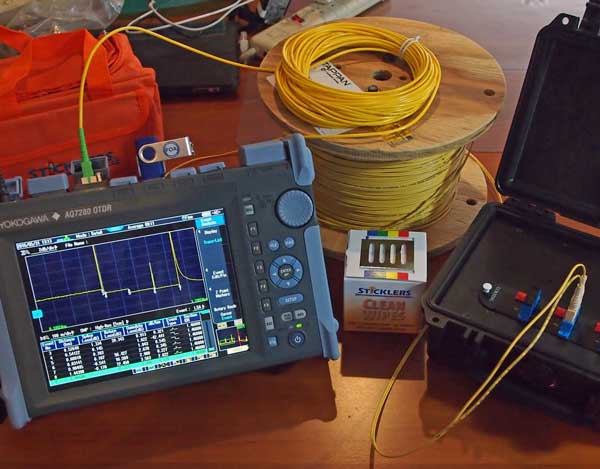All You Need to Find Out About Robotic Vision and Its Applications in Advanced Optical Dimension Equipments
Robotic vision represents a significant advancement in the junction of computer system vision, expert system, and machine knowing. This technology enhances the accuracy of optical dimension systems, allowing real-time data evaluation and enhanced top quality control. Its impact extends multiple sectors, from manufacturing to healthcare. Nevertheless, the advancing landscape of robot vision elevates inquiries regarding future abilities and applications (optical measurement system). What innovations lie in advance in this transformative field?
Comprehending Robotic Vision: Key Concepts and Technologies
Robotic vision includes the technologies and techniques that enable makers to translate and recognize visual info from their atmosphere. This field incorporates elements of computer vision, expert system, and artificial intelligence to facilitate automated decision-making based upon visual data. Trick concepts include photo handling, which involves the enhancement and evaluation of photos to extract significant features, and object acknowledgment, which enables makers to determine and classify objects within a scene.

The Integration of Robotic Vision With Optical Measurement Systems
As markets increasingly demand accuracy and performance, the integration of robot vision with optical measurement systems has arised as a transformative strategy. This synergy enables robots to view and interpret their environments, boosting the capacity of optical measurement systems to evaluate and analyze objects with unmatched accuracy. By furnishing optical sensing units with sophisticated imaging modern technologies, robot vision makes it possible for real-time information collection and processing, promoting instant modifications to dimension specifications.
The combination equips automated systems to detect variations in dimensions, surface area quality, and positioning, which are essential in high quality control procedures. Boosted formulas, such as device learning, additional increase this integration by boosting the systems' capability to adapt to different environments and situations. As a result, the integration not just simplifies measurement processes however also minimizes mistakes, making sure that items meet rigid market standards, thus strengthening the duty of robotic vision in the future of optical dimension systems.
Applications of Robotic Vision in Production
In contemporary production atmospheres, the usage of vision systems has actually revolutionized production processes by enabling devices to do tasks with remarkable precision and rate. Robotic vision systems are increasingly used for quality assurance, where they evaluate items for defects and guarantee adherence to specs. These systems use video cameras and progressed formulas to examine items in real-time, significantly reducing the risk of human error.
Furthermore, robot vision facilitates automation in setting up lines, enabling robots to precisely recognize components and assemble them with marginal downtime. This technology also enhances inventory monitoring, as vision systems can keep an eye on supply degrees and discover discrepancies, guaranteeing a smooth supply chain.
Robotic vision aids in the application of wise manufacturing facilities, where data from vision systems can be integrated with other modern technologies to maximize operations (optical fibre diameter analyser). Generally, the applications of robot vision in making show its important role in enhancing efficiency, top quality, and productivity across numerous markets
Robotic Vision in Health Care: Revolutionizing Patient Treatment

In recovery, robotic vision help in monitoring client progress and tailoring treatment sessions to private demands. It sustains doctor by automating jobs such as information collection and client monitoring, permitting more time to concentrate on straight person interaction. Furthermore, robot vision improves telemedicine by enabling remote medical diagnosis and online assessments, bridging the space between people and doctor. On the whole, the application of robot vision in healthcare is reinventing person care, causing improved end results, performance, and client satisfaction.
Future Trends and Developments in Robotic Vision Innovation
The quick advancement of robotic vision modern technology guarantees to further enhance its applications across various industries, including health care. Future fads show a from this source significant change towards including expert system and maker knowing, allowing systems to pick up Related Site from substantial datasets and boost precision with time. Enhanced sensor modern technologies and deep knowing algorithms are expected to refine things recognition capacities, permitting robotics to analyze intricate settings more effectively.

Furthermore, the integration of enhanced truth (AR) with robot vision will likely change exactly how robotics aid in procedures and diagnostics. This harmony will promote real-time information visualization, enhancing decision-making procedures. Furthermore, miniaturization of parts will bring about more small and versatile robotic vision systems appropriate for a variety of tasks. As these innovations unravel, sectors will witness boosted automation and performance, solidifying robotic vision as a cornerstone of ingenious technical options.
Frequently Asked Concerns
What Are the Key Elements of a Robotic Vision System?
The primary components of a robot vision system consist of electronic cameras for photo capture, processors for information analysis, formulas for interpretation, and actuators for movement. With each other, these aspects make it possible for robotics to regard and engage with their atmosphere efficiently.
Exactly How Does Robotic Vision Improve Accuracy in Measurements?
Robotic vision improves dimension accuracy by utilizing advanced imaging innovations, enabling specific item discovery and spatial analysis. This capability reduces human error, boosts repeatability, and permits for real-time adjustments, eventually improving total measurement dependability and efficiency.
What Industries Benefit A Lot Of From Robotic Vision Modern Technology?
Various industries profit greatly from robot vision modern technology, consisting of manufacturing, medical care, farming, and logistics. These industries use improved precision, performance, and automation, leading to boosted efficiency and lowered operational costs in their corresponding processes.
Can Robotic Vision Solutions Work in Low-Light Issues?
Robotic vision systems can without a doubt work in low-light problems, utilizing innovative sensing units more information and formulas to improve picture clearness. This ability enables them to perform efficiently in different environments, consisting of industrial and monitoring applications, despite very little lighting.
What Are the Expenses Connected With Applying Robotic Vision?
The expenses related to executing robotic vision vary significantly, affected by parts such as cameras, software application, and combination. Additional costs consist of maintenance, training employees, and possible upgrades to existing systems, which can collect over time.